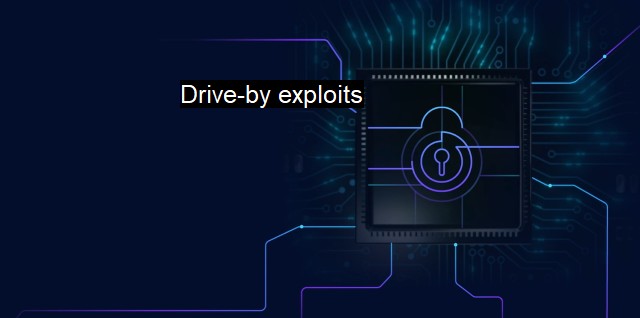What are Drive-by exploits?
The Rise of Drive-by Exploits in Cybersecurity: How to Protect your System from Stealthy Attacks
Drive-by exploits refer to a sophisticated form of cyberattack where malware is installed onto a user's device automatically when they visit a compromised website, even without any action or click on the user's part. The objective of these attacks often revolves around gaining unauthorized access to systems, theft of information, and causing disruption.The term "drive-by" harks back to the notion of a drive-by shooting, implying a sudden, surprising attack that seemingly comes out of nowhere and leaves damage in its wake. drive-by exploits work more or less in a similar manner, striking unexpectedly and leaving significant repercussions for those targeted.
Drive-by exploits prey on vulnerabilities present in one's browsing experience. Such vulnerabilities could stem from outdated versions of browser software, unpatched security holes, or errors in the coding of a website. Exploit kits, which are tools used to discover and take advantage of these vulnerabilities, generate malicious code targeting specific weaknesses. Even highly-protected systems can be easily compromised if there is an unattended vulnerability available for the malicious actors to exploit.
Once the victims visit an infected website, the exploit kit starts its work in the background. It starts by scanning the user's system to identify any potential weakness, like outdated web browsers, plugins, or other system components. Then it injects its payload of malware onto the system through these exposed weaknesses.
The malware can take the shape of spyware, ransomware, or a trojan virus, to name a few. These viruses may allow cybercriminals to gain a backdoor into the system, near-total control of the computer, or they could encrypt the data and demand a ransom for its recovery. What makes drive-by exploits precarious is the fact that infection can happen seamlessly without the victim knowing about it, making it a favoured tactic for many cybercriminals.
Protecting oneself from drive-by exploits typically involves a multi-pronged approach. One of the primary measures is to keep all software, especially web browsers and their plugins, up-to-date. Software providers and developers regularly fix known vulnerabilities and issue updated versions of their applications. Regular patching of computer systems significantly reduces the risk of a successful drive-by exploit.
Installing a reputable antivirus or security software and regularly updating it can provide much-needed protection against these attacks. They scan and monitor your computer for odd behaviours or unauthorised attempts, helping you detect and respond to threats promptly. In addition to traditional antivirus software, browsing tools called browser sandboxes can also help prevent drive-by downloads.
The rise in a digitalized world has brought about a parallel surge in cyber threats, one such being drive-by exploits. It is a silent, stealthy cyber attack that preys on software vulnerabilities silently while the user simply browses the Internet. But just as the threats evolve, so does the protection against them, with constant software updates, effective antivirus programs, and an individual's cautious actions standing as the forefront of defence. It can't be ignored that the responsibility of upholding Internet safety is shared by software providers and users alike – they must be vigilant, proactive, and always in the loop with the latest security measures.

Drive-by exploits FAQs
What are drive-by exploits?
Drive-by exploits are a type of cybersecurity threat where attackers use malicious code to exploit vulnerabilities in a user's system. This code is often hidden in legitimate-looking websites or advertisements, and the user may not even be aware that their system has been compromised.How do drive-by exploits work?
Drive-by exploits work by taking advantage of vulnerabilities in the software or operating system of a user's device. The attacker creates a webpage or an advertisement that contains malicious code, which is then executed when the user visits the page or clicks on the ad. Once the code is executed, the attacker can gain access to the user's device, steal sensitive information, or install additional malware.What can I do to protect myself from drive-by exploits?
To protect yourself from drive-by exploits, it's important to keep all of your software and operating system up-to-date. You should also use a reputable antivirus program to detect and block malicious code. Additionally, you should be wary of clicking on ads or visiting unfamiliar websites, especially if they prompt you to download or install software.What are the consequences of falling victim to a drive-by exploit?
The consequences of falling victim to a drive-by exploit can be severe, ranging from identity theft to financial losses. Attackers may use the exploit to steal sensitive information, install additional malware, or take over your device for malicious purposes. It's important to take immediate action if you suspect that your device has been compromised by a drive-by exploit, such as running a virus scan or contacting a cybersecurity professional.| | A | | | B | | | C | | | D | | | E | | | F | | | G | | | H | | | I | | | J | | | K | | | L | | | M | |
| | N | | | O | | | P | | | Q | | | R | | | S | | | T | | | U | | | V | | | W | | | X | | | Y | | | Z | |
| | 1 | | | 2 | | | 3 | | | 4 | | | 7 | | | 8 | | |||||||